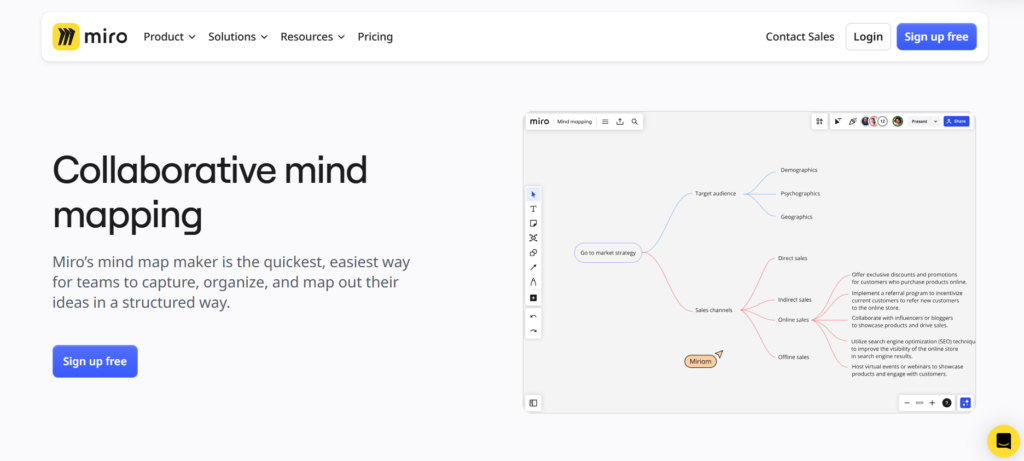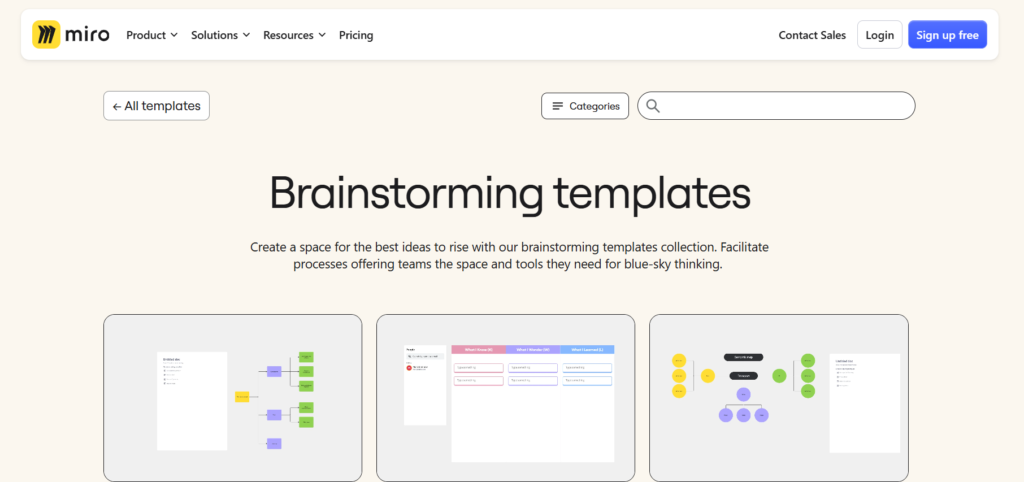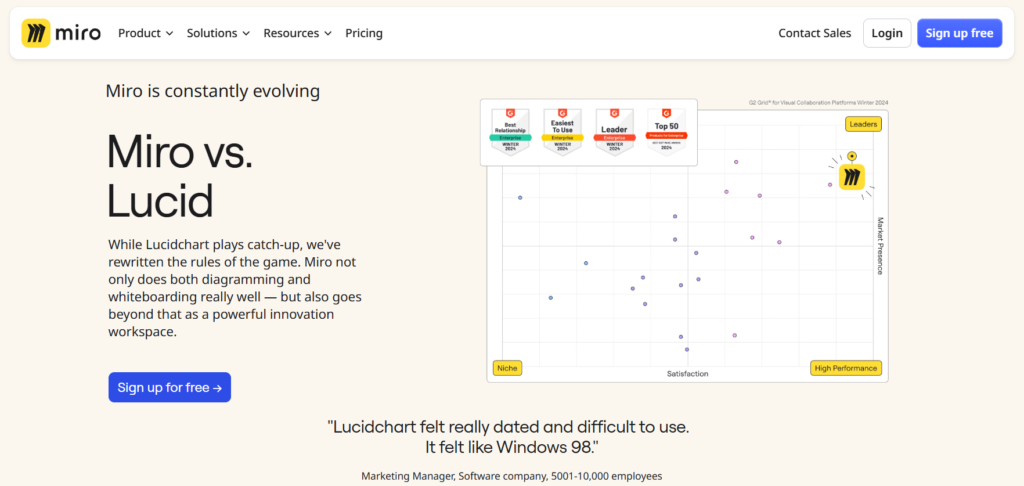Growing an audience through content isn’t just about writing blog posts. It’s about creating the right kind of content that actually brings in users who are ready to engage.
Miro has done this exceptionally well. Their content isn’t just optimized for traffic. It’s built to drive sign-ups, engagement, and product adoption.
If you’re competing with Miro but don’t have their budget, this breakdown will help.
Learn what Miro implemented and how you can strategically apply the same approach.
What Kind of Content is Working for Miro?
Miro’s content falls into three categories. Each plays a role in bringing in visitors who are looking for more than just information. These users are searching for tools and solutions.
1. Content Focused on Actionable Solutions
Miro’s blog isn’t filled with industry news or fluffy insights. They publish content that answers real-world problems with practical guides and visual walkthroughs.
A great example is their Mind Mapping landing page. It doesn’t just explain what mind mapping is. It walks users through the process and includes interactive templates that encourage users to start using Miro right away.
Another example is their Flowchart Maker landing page. This page isn’t just a blog post. It’s a fully interactive experience. Users can see real flowchart examples and try the tool immediately.
Instead of just writing about “how to create a flowchart,” they show users exactly how to do it inside Miro.

Source: MIRO
What to Implement:
#1 Stop writing generic educational content. Make every blog post actionable.
#2 Show users how to solve a problem with your product, not just why they should solve it.
#3 Add interactive elements to guide users toward product adoption.
2. Templates and Resources That Convert
Many of Miro’s highest-performing pages aren’t traditional blog posts. They are free resources designed to provide instant value.
One of the biggest drivers of organic traffic is their Brainstorming Templates. This page ranks well because it directly serves user intent. People searching for brainstorming templates don’t want to read about brainstorming. They want a ready-to-use template.
Their UX Research Template works the same way. The moment a user lands on the page, they can start using it immediately.

Source: MIRO
What to Implement:
#1 Offer free resources that immediately solve a need.
#2 Make your content actionable. If someone is searching for a template, don’t just tell them about it. Give them one.
#3 Structure landing pages like interactive experiences, not just text-heavy guides.
3. Comparison and Alternative Content That Captures Buyers
Not every visitor is new to whiteboarding tools. Some are actively looking for a better alternative to what they already use. Miro wins in this area by creating content that helps users decide.
Their Best Whiteboard Tools page is optimized to attract users comparing different options. Instead of waiting for users to search for competitors, Miro actively positions itself as the best choice.
Another strong example is their Miro vs Lucidchart comparison. This is the type of content that influences purchase decisions.

Source: MIRO
What to Implement:
#1 Create comparison pages that show why your tool is the best option.
#2 Own alternative-based searches by providing real comparisons.
#3 Use customer testimonials, feature breakdowns, and visuals to make the decision process easier.
How to Apply Miro’s Content Strategy to Your Business
To summarize, Miro’s content is designed to drive action, not just traffic. Their guides, templates, and resources help users experience the product right away.
A user searching for “mind mapping” doesn’t just read about it. They get an interactive tool they can use immediately.
Templates and frameworks play a big role. A brainstorming template or a UX research framework solves an immediate need. It also introduces Miro as the best platform for the job. Content should be useful even before a user signs up.
Miro also owns high-intent searches. Someone searching for “best whiteboarding tools” is comparing options.
Someone searching for “Miro vs Lucidchart” is ready to decide. Miro makes sure users find content that moves them toward choosing their platform.
Most businesses struggle with content because it lacks a clear conversion path. Blog posts attract visitors, but they don’t lead to sign-ups.
Miro’s content works because it is intent-driven and aligned with the product.
If you have a SaaS and looking to get leads via content, these are the strategies to focus on.
At Concurate, we don’t just create content. We build strategies that bring in leads, convert visitors, and position your product as the best choice.
Want a content strategy that actually drives sign-ups? Let’s talk.







